
Chateau of Chambord
The Chateau of Chambord is located in the commune of Chambord in the Loire Valley, France. The castle…
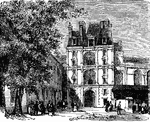
Chateau of Fontainebleau
Located about 55 kilometers from Paris, it is one of the largest French royal chateaus. Pictured is…

The Richelieu Pavilion of the Louvre
The Richelieu Pavilion (a pavilion located on the inside "court") of the Louvre Palace. The Richelieu…
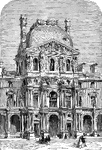
Turgot Pavilion of the New Louvre
Located in the New Louvre, the name given to the wings and pavilions extending from the main body. The…

The Siege of Château Gaillard, the Saucy Castle of Richard the Lionheart - Aerial View
An aerial view of the siege of Château Gaillard, also called the Saucy Castle. Construction of the…
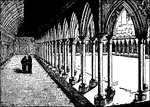
A Cloister at a French Monastery from the Middle Ages
This illustration shows one fragment of a French cloister built in the Middle Ages. The architecture…

George Washington - Silhouette
A silhouette is "a profile portrait in black, so called after Etienne de Silhouette, French minister…
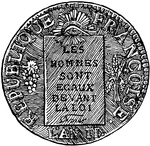
French Sou from 1793, Obverse
"Under Louis XV, and Louis XVI, the sou was struck in copper, and had an intrinsic value of two deniers…
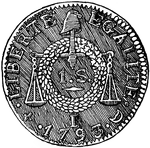
French Sou from 1793, Reverse
"Under Louis XV, and Louis XVI, the sou was struck in copper, and had an intrinsic value of two deniers…
Spire from the Senlis Cathedral
Illustration of a spire of the Senlis Cathedral in France, early 13th century. It is "one of the earliest…